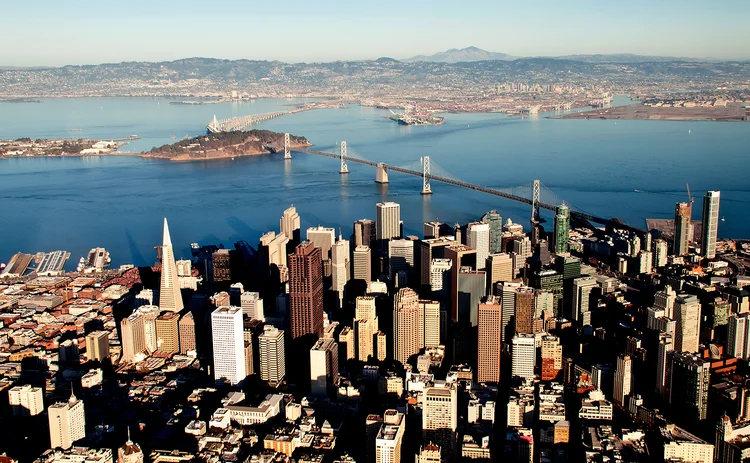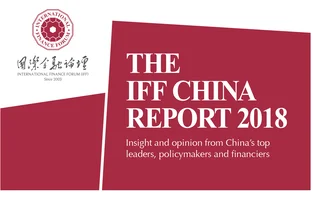
Riding the technology wave – Innovation in the Greater Bay Area
Ma Jiantang, executive vice-president of the Chinese Academy of Governance, looks at how a remodelled Chinese economic landscape combining the best elements of free markets and state planning creates fertile ground for rapid transformation and innovation-driven growth


The global economy is recovering and trending upwards. The deflation and weak demand that have plagued it for a decade are expected to go into reverse. The International Monetary Fund’s world economic outlook shows a global economy on the upturn, with growth rates in 2017 and 2018 reaching 3.7% and 3.9%, respectively – significantly higher than 2016’s 3.2%.
Why are commentators so confident that the international economy is drawing away from its 10-year abyss? Fundamentally, because the next-generation technology revolution – characterised by commercialisation and industrialisation in areas such as the internet, artificial intelligence, life sciences and technology – has created a vast amount of new industries, forms, models and services.
New economies breed expansion through expedited urbanisation and the rapid transformation and upgrading of traditional industry – this is now a new sustainable engine for the world economy. China’s priority has switched from high-speed growth to high-quality development, creating a crucial juncture in improving quality and efficiency, and changing driving forces.
Implementation of innovative strategies and supply-side structural reform is profoundly remodelling the Chinese economic landscape and the dynamic structure of economic growth.
First, innovation produces new growth drivers, supports sustainable development and improves the quality of the national economy. Thorough implementation of innovation strategy engenders an unstoppable wave of ‘mass entrepreneurship and innovation’, which in turn accelerates a new round of technological revolution. As a result, China is seeing the rapid development of new industries, formats and patterns, as well as the transformation and upgrading of traditional industries.
More than one-third of the world’s ‘unicorn’ companies – start-ups valued at more than US$1 billion – were founded in China. Riding the overwhelming wave of science and technology development, China fosters sharing, platform and digital economies, among others, while new products and services constantly emerge to increasingly support the structural optimisation of energy transfer, stable employment and quality efficiency ascension.

Second, reforms such as supply-side structural reform restored to some extent the supply-and-demand pattern, and rebalanced the economy.
China insisted on prioritising supply-side structural reform, and implemented the significant undertaking of ‘three cut, one reduction, one supplement’, which included a cut in excess capacity, enterprise mergers and reorganisation, transforming the long-term pattern of supply exceeding demand. The supply-and-demand pattern not only advanced supply-side quality, but also increased the price of industrial products – especially bulk raw materials – thus increasing business profit and fiscal revenue.
In the meantime, China has optimised its business environment by simplifying governance and decentralising power. In the first three quarters of 2017, nearly 16,000 new enterprises registered each day to further stimulate the market’s vibrancy.
The intersection of an optimised economy for national development with the long-term cycle powered by the technology revolution’s marketisation and industrialisation, opens up historic opportunities for sustainable and healthy development while creating new engines and patterns for the Guangdong–Hong Kong–Macao Greater Bay Area (the Bay Area Development) and its economic growth.
The Bay Area Development has demonstrated its unique advantages and become a bright star in the global economic firmament. The success of New York’s bay area is based on the prosperity and strength of its financial services industry; San Francisco’s bay area benefits from the emergence of high-tech industry; and Tokyo’s bay area drives on two wheels – the financial services and shipping industries. These three bay areas adopted similar developmental approaches – infrastructure integration, synergies in regional division of labour, liberalisation of element flow and inclusiveness of business environment. They transferred from port, industrial and service economies to innovation economy and ultimately achieved multi-stage growth by expanding the scope of their economic activities.
The Bay Area Development has a solid economic foundation and tremendous potential for growth – its gross GDP is equal to that of New York’s bay area and twice that of San Francisco’s. Its trade volume is more than three times larger that of the Tokyo bay area, and its passenger transfer volume places it among the world’s three largest ports and airports.
Moreover, the Greater Bay Area’s tradition of regional strengths in talent and intelligence, institutions, policies and industries is becoming increasingly prominent.
In the future, the Bay Area Development will drive a new round of economic growth, aided by a more open economic structure, more efficient resource allocation, a more influential spillover effect and more advanced international networks. It will not only promote the development of the Pan-Pearl River Delta (Pan-PRD) – including the mid-south and southwest regions – but will also establish itself as a hub for the Belt and Road Initiative (BRI) in finance, information, commerce and technology.
The Bay Area Development will strengthen China’s role in international labour, economic globalisation, global governance and the “community with a shared future for mankind”.
Socialism with Chinese characteristics has entered a ‘new era’ of politics and power, which brings with it new opportunities and requirements. In this new era, the Bay Area Development will further excavate, integrate and exploit its three unique advantages, which are regional, systemic and advantages of integration.
Regional benefits
To the north, the Greater Bay Area connects urban agglomerations in central China, while to the south it links with Southeast Asia. It is flanked by the Western Taiwan Strait Economic Zone to the east, and the Beibu Gulf Economic Zone to the west.
As an important component of the BRI, the Bay Area Development is equipped with advanced transportation, a comprehensive industrial chain, abundant science and technology innovation, and human talent and intelligence. It enjoys a high degree of openness and distinguished international financial services. Therefore, the Bay Area Development is on a mission to propel internal and external regional co-operation, and to enhance its function of radiating economic benefits through co-ordination in infrastructure and enhancement of talent exchange, information and communication.
Advantages of integration
The Greater Bay Area covers two special administrative regions – two first-tier cities and three free-trade zones – all with internal and external competitive advantages. In the new era, it is necessary to exert new advantages and creativity, and assert better overall planning and resource integration to
take a new economic leap, co-building a healthy Greater Bay Area and a high-quality living community. Furthermore, this should actively encourage free flow of all kinds of production factors to form a favourable ecological environment benefiting industrial transformation and the cultivation of new industries. Financial development should spur a two-way flow between Hong Kong, Macao and mainland China to nurture a global financial hub that leads the development of the Pan-PRD and serves the BRI.
Systemic advantages
One of the most distinguished features of the Greater Bay Area is the ‘one country, two systems’ policy. Three distinct, diversified economic systems have differentiated the Greater Bay Area from its global competitors.
Skilful use of this diversification would attract multiple cultures and complement each city in the Greater Bay Area; moreover, it would generate compliance advantages for economic development there. The megacity cluster comprising Guangzhou, Shenzhen and Hong Kong can move to a new stage by extending its economic reach, driving resource sharing, talent and intelligence gathering for the Greater Bay Area, further developing the PRD and equipping China with new propulsive powers for its greater economic leaps forward.
Building a more prosperous and civilised Greater Bay Area forms an organic part of the Chinese Dream that aims to achieve the great rejuvenation of the Chinese nation. It is also a shared historic mission for the generation bearing the weight of hope, endeavour and hard work.
Only users who have a paid subscription or are part of a corporate subscription are able to print or copy content.
To access these options, along with all other subscription benefits, please contact info@centralbanking.com or view our subscription options here: subscriptions.centralbanking.com/subscribe
You are currently unable to print this content. Please contact info@centralbanking.com to find out more.
You are currently unable to copy this content. Please contact info@centralbanking.com to find out more.
Copyright Infopro Digital Limited. All rights reserved.
As outlined in our terms and conditions, https://www.infopro-digital.com/terms-and-conditions/subscriptions/ (point 2.4), printing is limited to a single copy.
If you would like to purchase additional rights please email info@centralbanking.com test test test
Copyright Infopro Digital Limited. All rights reserved.
You may share this content using our article tools. As outlined in our terms and conditions, https://www.infopro-digital.com/terms-and-conditions/subscriptions/ (clause 2.4), an Authorised User may only make one copy of the materials for their own personal use. You must also comply with the restrictions in clause 2.5.
If you would like to purchase additional rights please email info@centralbanking.com test test test







